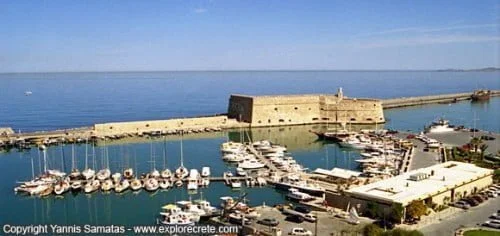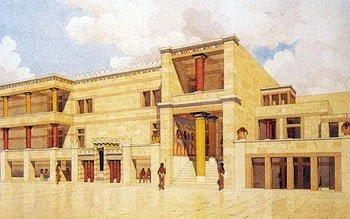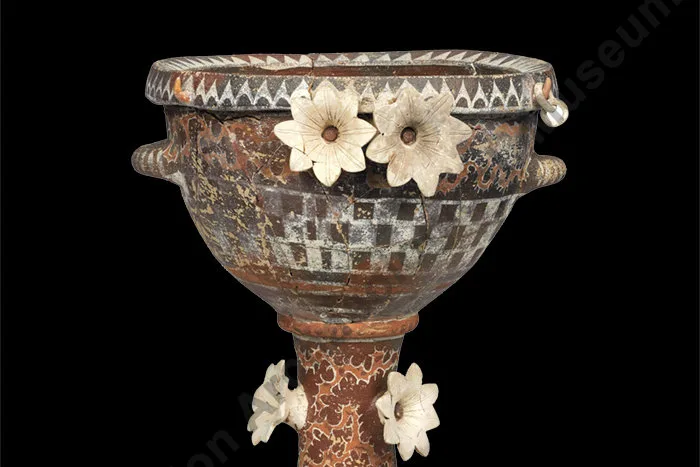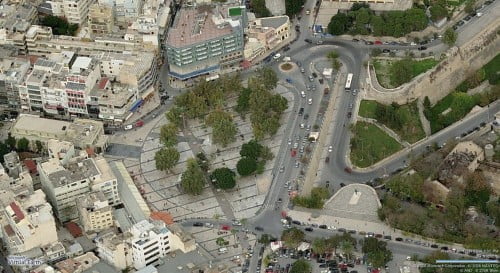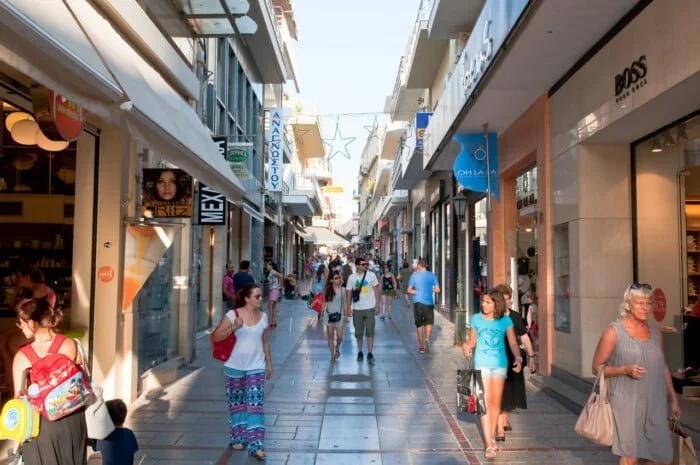Heraklion walls, the Byzantine, Arabian and Venetian walls of Heraklion
Heraklion Walls
Heraklion walls, or more accurately, the Venetian walls of Heraklion are an excellent example and one of the best preserved monuments in the Mediterranean basin, concerning the fortification architecture of the 16th century A.D.
Walking along the Heraklion Walls feels like unwinding the skein of history of the city, while vivid memories of the glorious past are strongly embodied into them. The citizens of Heraklion sometimes take for granted the beauty that surrounds them and they don’t very often walk on the Venetian Walls, yet it’s worth the visit.
The Venetian Walls of Heraklion extend to a length of about 4,5 klm and form a triangle protecting the “Old Heraklion” of the 16th century A.D. Starting from the western end of the city Walls you will see seven heart shaped bastions (forts) and four impressive city gates (portals). The fist bastion of St. Andrew is followed by Pantocrator, Bethlehem, Martinengo (the vertex of the triangle), Jesus, Vitouri and lastly, Sambionara: The Bastion of the Sand at the east end of Heraklion. The four gates are Pantokrator or Chania Gate, the reconstructed Bethlehem, the Jesus Gate or more often called New Gate and the Gate of St. George on the Freedom Square in the centre of Heraklion nowadays.
However, the history of Heraklion neither began nor ended with the Venetians, and the same is true of the city walls. The first walls were built by the Byzantines, followed by the Arabs and the Arab walls; then the Venetians came and were replaced by the Turks, after 100,000 lost their lives before the Venetian walls during the 22-year siege; and finally the walls of Heraklion survived yet another conflict, the Second World War and the Luftwaffe bombings.
Let’s take a detailed look at the history of the walls of Heraklion:
The Byzantine Walls of Heraklion
The period that followed the Roman settlement in Crete, is known as the First Byzantine Period, 330-828 AD. The Byzantines were the first to fortify Heraklion with walls. Very little remains from the Byzantine walls today and that is mostly in the center of Heraklion between houses and shops.
The Arabian Walls of Heraklion
The Muslim Arab conquest of Crete, by Saracen armies in 828 AD, brought the first serious fortification of Heraklion, which became known in Arabic as “Rabdh El Khandak” (the Fortress of the Trench.), later becoming Chandax. Look for a recently improved street in the town centre; named Chandakos, or Handakos, recalling the historic name which came to signify the whole of Crete for centuries; Candia.
Very little remains of the Arabian walls of Heraklion, although we know where its boundaries were and the fact that the Saracens dug an extensive trench around it. The Saracens occupied Crete from 828 AD until they were evicted by the powerful Byzantine Empire in 961 AD.
The Venetian Walls of Heraklion
After more than two centuries of uncertainty, partly due to cost of the Crusades and the constant threat from the east, and following various complicated political deals, Byzantium eventually settled the island in the hands of Venetian rulers, firstly in 1204, when they somehow allowed an Italian pirate to dominate, and finally again in 1211. The strategic port of Heraklion was now seen as important to the security of the Venetian Empire.
Heraklion walls were first strengthened, and then rebuilt on their present site from 1462, when work began to enclose all of the rapidly expanding city. This work would take over one hundred years to complete, including the fortress of Koules, then known as Rocca del Mare, the harbour with its arsenals and the superb architecture that can be seen in town today.
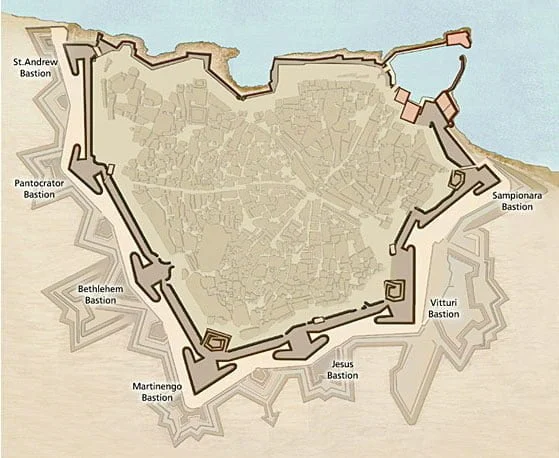
– The seven bastions of the Venetian walls of Heraklion –
The Cretans of this time only gradually settled down to peaceful co-existence with Venetian governance, but the period beginning around 1367 and onwards saw a flourishing of the arts and a unique culture in Candia, which enjoyed its most peaceful period since the Minoan era. The fall of Constantinople in 1453 brought an influx of artists and scholars, and the city became known for its school of painting. We should acknowledge that the Venetian buildings, roads, aqueducts and fortifications were accomplished through the hard work of the Cretan population.
Heraklion walls resisted the Turkish siege for 22 years
Heraklion walls were to prove their strength in the most dramatic way. Besieged on all sides by Ottoman Turkish forces, the city finally fell after 22 years of warfare in 1669. It is recorded that the fall of the city was only made possible by the treachery of one man, a Cretan-Venetian builder called Andreas Barotsis, who indicated the walls’ weaknesses around its eastern and western corners, including the Bastion of (ironically) San Andreas.
The later history of the walls is quite uneventful in comparison with this epic battle. The Turks made good renovations to the structure, again with Cretan forced labour, and the name of the city was changed once again, this time to “Megalo Kastro”, the Great Castle.
Heraklion walls damaged by German bombs
Heraklion walls were again damaged in World War Two as much of Heraklion was crushed by Luftwaffe bombardment. The city was left in ruins, and post-war re-building was aimed at housing people as quickly and economically as possible.
Smaller fortresses lying outside the walls were demolished, some important structures inside the city were cleared and even the walls themselves were once considered to be obstructing the growth of Heraklion. Luckily for all of us they were saved from the bulldozers, because Heraklion without its walls would be a sad place. It has already lost too many links with the past, and the Heraklion walls symbolise the resistance to outside rule that is a characteristic of Crete today.
- A walk on the Venetian walls of Heraklion, pictures and maps of the Venetian walls of Heraklion
© explorecrete.com All Rights Reserved. Reproduction or copying without permission is prohibited.

